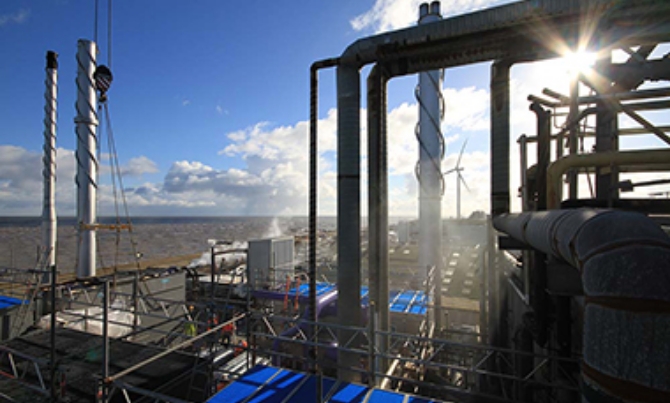
Wet bulb temperature is essential in the calculation of volume and design of a cooling tower water efficiency. Water is cooled down by evaporation to a temperature that’s lower than an ambient temperature which approaches a wet bulb temperature. Knowing how to calculate this is crucial.
Wet Bulb Temperature Explained
Wet bulb temperatures are the lowest possible temperature attained by adiabatic evaporation of water into the air until it is saturated. Heat is needed to achieve evaporation and when it is adiabatic, the heat gets extracted from the air (environment) which causes the air to cool and thus humidity is increased. An example of this is when you step out of a shower or a swimming pool. All the water on your body evaporates while extracting heat from your body, thus you get cold.
Measuring Wet Bulb Temperature
You can measure the temperature using a wet bulb thermometer which has a mercury reservoir that’s enclosed in a cotton stocking. By connecting it to a water tank using a cotton thread, the thermometer remains wet and is placed where there’s an air stream. All the water will evaporate while heat gets extracted from the environment. This includes the mercury reservoir and as such the measured temperature decreases.
The water will continue to evaporate till the air is totally saturated. Thus relative humidity is 100%. The temperature will reach a balance which is the wet bulb temperature. However, when air is drier, more water will evaporate and as such the wet bulb temperature would be lower.
In short, the greater the difference is between the dry bulb temperature and the wet bulb temperature, the drier the air will be and a greater amount of water will evaporate. In short, it’s an effective way to measuring wet bulb temperature.
The Difference Between Dew Point Temperature and Wet Bulb Temperature?
The dew point temperature is not the same as the wet bulb temperature. To explain, the dew point temperature describes the temperature at which point the water vapour starts to condense by the cooling air without having to add or remove moisture. As such, the dew point is much lower than the wet bulb temperature. The wet bulb temperature is less than the dry bulb temperature when relative humidity is lower than 100%.
How to Apply the Wet Bulb Temperature Theory to Cooling Towers
A cooling tower’s cooling mechanism works through evaporation where part of the water evaporates. The heat needed for the evaporation to occur is extracted from the hot water that requires cooling (adiabatic evaporation). The air becomes saturated as it passes through the tower in the water which increases the relative humidity of the air.
The evaporation process allows water to be cooled to temperatures that are below the ambient temperature and which approaches the wet bulb temperature. This is the reason why the wet bulb temperature is crucial to the design of a cooling tower.
A cooling tower’s dimensions depend on the power that’s to be discharged and the cooling limit distance between the temperature of outgoing, cold water and the wet bulb temperature. The smaller a cooling boundary distance, the larger a cooling tower has to be to achieve the same output capacity. An example being a cooling tower with a power output of 500 kW which has a cooling limit distance of 4° would be larger than a cooling tower for 500 kW with 7° cooling limit distance.
Wet Bulb Temperature FAQ
What is meant by wet bulb temperature?
Wet bulb temperature is the temperature indicated by a dampened thermometer bulb that’s exposed to the airflow (adiabatic saturation).
Why is wet bulb temperature important for cooling towers?
The wet bulb temperature is essential in the design and dimensions of a cooling tower because water in the tower is cooled by evaporation to temperatures lower than the ambient temperature and which therefore approaches a wet bulb temperature. It’s an essential when calculating cooling tower water efficiency.
How does wet bulb temperature affect cooling tower performance?
A cooling tower uses latent heat of vaporisation (evaporation) in order to cool process water. Lesser additional cooling is supplied by the air due to its temperature increase. A lower wet bulb temperature indicates that the air is drier and can therefore hold a greater amount of water vapour than it could at a greater wet bulb temperature.
How do you calculate wet bulb temperature?
The wet bulb equation is as follows:
● Formula. Tw = T * arctan[0.152 * (rh + 8.3136)^(1/2)] + arctan(T + rh%) – arctan(rh – 1.6763) + 0.00391838 *(rh)^(3/2) * arctan(0.0231 * rh) – 4.686. ● Current Temperature.
● Relative Humidity (%)
Is ‘dew point’ the same as ‘wet bulb temperature’?
A dew point temperature refers to the temperature at which point water vapour begins to condense by cooling air without removing or adding any moisture.

Lucy keeps the well oiled machine of Vistech Cooling running smoothly. She has close to a decade of experience working in the industry and creates industry-leading content that provides necessary information but also deeper insights into the field most people may not have considered.
